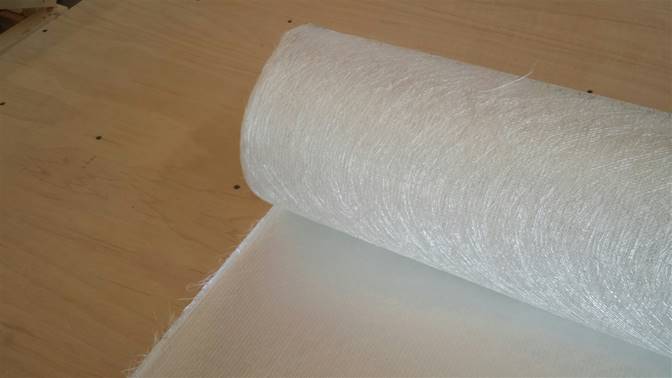
Fiberglass is incredibly versatile, and has, over the years, won a place for itself in a whole host of different areas of industry. Whether you are a grizzled professional, or a hobbyist who just started out building fiberglass boats, if you are thinking of making this material your business point, you are most definitely on the right track.
This is mostly owing to its physical properties. Since fiberglass is basically a mix of glass and plastic, it literally took the best of both worlds.
The plastic base lends it the softness and flexibility that make it so easy and convenient to mold into shapes and stuff into all sorts of crevices and isolation units. The tiny little glass shavings that are scattered throughout that base lend it the signature strength and resilience.
So how can you best take advantage of this awesome material for your own business ventures? We took a look at the trends and came up with four industries in which you are the most likely to find your big fiberglass break. Take a look at this informative guide we put together for you, and good luck on your road to riches!
The construction industry
This is likely the most obvious option, and you probably already thought of it yourself, even before you started googling for opportunities and got to this article. Good on you for thinking in advance! The construction industry is probably the way in which most of us had our first contact with fiberglass to begin with. Maybe you saw a family member using it in some home repairs. If you live in a building, you may have encountered the prickly yellowish stuff peering out of pipes in the communal basement.
Modern builders rely heavily on this material because of its lightweight, significant strength, and impressive resistance to moisture and chemical agents. Since it scatters the glass bits all over the plastic matrix, the resulting composite is equally resistant to the outside force in all directions through its structure. They call this “isotropy”, meaning that the material has the same mechanical properties throughout. To learn more about isotropic, anisotropic, and orthotropic materials, look at this informative text.
It is the most popular choice for constructing false ceilings, conduits, and various columns. They often use fiberglass resin to coat the outside of a building, because it is waterproof, and you can even find it as a component in shower stalls.
The industry of packaging materials and luggage
If you have ever gone on a trip that is longer than a weekend over at your friend’s place, and especially if you like to travel long-distance, chances are that you were smart enough to invest in one of those heavy-duty suitcases with very hard sides to protect your items from being battered around in transport storage. Way to go!
But did you know that there is fiberglass in that as well? Those hard suitcases are manufactured using fiberglass resin. This makes them tough enough to protect your property, yet lightweight enough to be transported easily, and is overall cheap to manufacture. Moisture resistance is a big bonus on rainy road trips, too.
Because fiberglass resin is easy to melt and mold, it has found a place in the packaging industry, in the shape of films and sheets. Since it is more resistant to tearing than regular, non-reinforced plastic, it is being increasingly used in heat sealing and producing vacuum packaging solutions.
The automobile (and generally vehicle) industry
One particularly impressive trait of fiberglass is that it is equally strong as steel and aluminum, but much lighter, which is why it is rapidly gaining popularity in producing automotive components and various spare parts for cars and vehicles in general.
This translates into a lighter car, meaning that the engine carries a far lesser load, meaning that a fiberglass-based vehicle will be significantly faster than a steel-based or aluminum-based one. Another significant factor is increased fuel efficiency. A heavier vehicle consumes more fuel (think about the tank budget for an SUV, for example). For a more in-depth discussion of the pros and cons of fiberglass in vehicles, check out this thread: https://mechanics.stackexchange.com/questions/26175/what-are-the-pros-and-cons-of-fiberglass-body
The industry of furniture manufacture
For indoor design, wood remains the irreplaceable favorite classic, both in old-fashioned “grandmotherly cozy” nooks, majestic formal studies, and modern studio apartments. But what about your outdoors furniture? Just imagine a beautiful wooden garden table getting soaked in the rain and baking in the sun. And then getting attacked by starving termites and other creepy crawlies. The horror! The expense! The ick factor!
Therefore, plastic has become the go-to choice for most patio chairs and tables, and even backyard stools, and garden swings, etc. It is waterproof, sun-proof (if you disregard the slow but steady discoloration because of the UV rays), and thankfully, it is entirely unappetizing to bugs of any kind. On that note, teething pets will typically leave it alone as well. However, standard plastic is flimsy; it is easy to distort and buckles under weigh-based pressure. If you have ever seen a garden chair with its legs spreading out in all four directions, you know exactly what we are talking about here.
By contrast, fiberglass has both the strength to endure people’s weight consistently and is itself lightweight enough you can just casually pick it up at any point and move it to whatever new spot you can think of. Rain and snow will not damage it at all, and it is also not affected by UV rays. Moreover, all the maintenance it will ever need (barring some significant forceful damage) is a damp cloth and it will be all squeaky clean and good to go!
So, there you have it. An aspiring fiberglass manufacturer has many career paths to choose from! Which way will you go?



